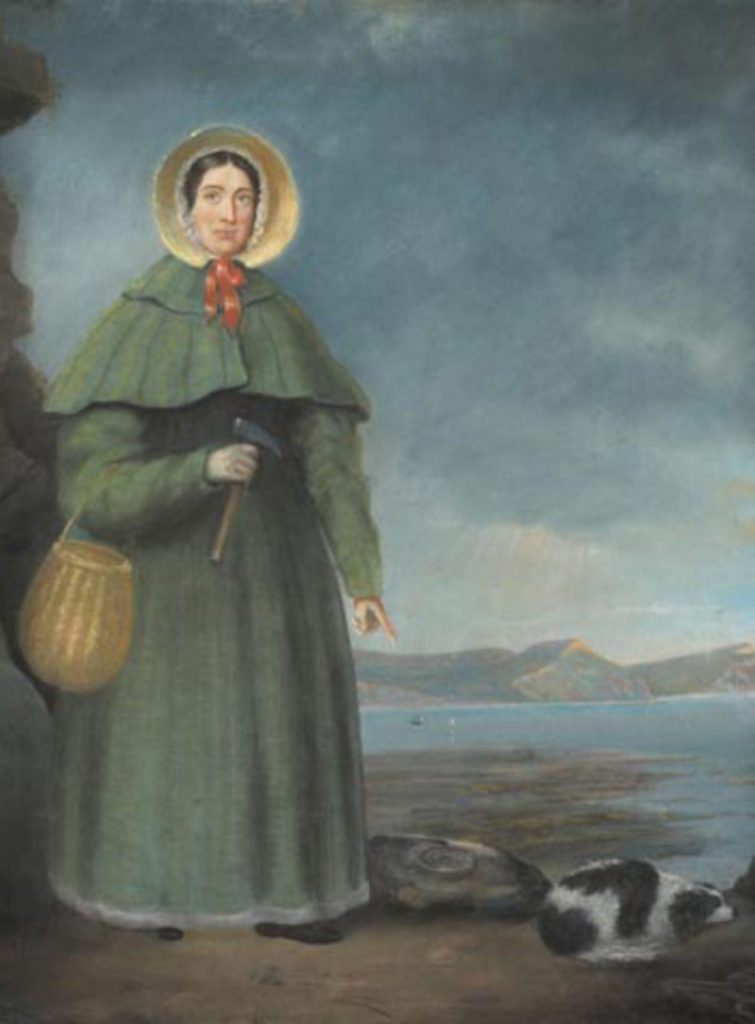
A “pioneering paleontologist and fossil collector” Mary Anning was born in 1799 in Lyme, England and was the first explorer of what is now called the Jurassic Coast (http://www.nhm.ac.uk/discover/mary-anning-unsung-hero.html)
From a poor family of religious dissenters, Mary and her brother were the only children of ten that survived into adulthood. Her father was a carpenter and cabinet maker who also was fond of fossil hunting. And young Mary quickly latched on to this as a lucrative trade to supplement her family’s income.
Literate, despite little formal education, Mary also taught herself geology and anatomy (http://www.nhm.ac.uk/discover/mary-anning-unsung-hero.html). With her brother, at the age of 12, she found the first complete Ichthyosaur in 1811, which created a buzz among the scientific community (https://www.lymeregismuseum.co.uk/collection/mary-anning/). The assumption, at the time, was that it was a crocodile skeleton (The Eclectic Magazine of Foreign Literature, Science, and Art, 1858). The first complete Plesiosaurus followed in 1823 and seemed so incredible, some accused it of being a fraud (http://www.nhm.ac.uk/discover/mary-anning-unsung-hero.html).
Her discoveries helped push scientific understanding of the natural world and history and usher in the field of paleontology.
Mary died of breast cancer at 47, still impoverished, despite an international reputation and many significant discoveries. Known to brave all weathers, willing to allow visitors to accompany her for free, Mary corresponded with a host of scientific men both at home and abroad (The Eclectic Magazine of Foreign Literature, Science, and Art, 1858). Her own mother would say of Mary, that she was “a history and a mystery” (The Eclectic Magazine of Foreign Literature, Science, and Art, 1858).











